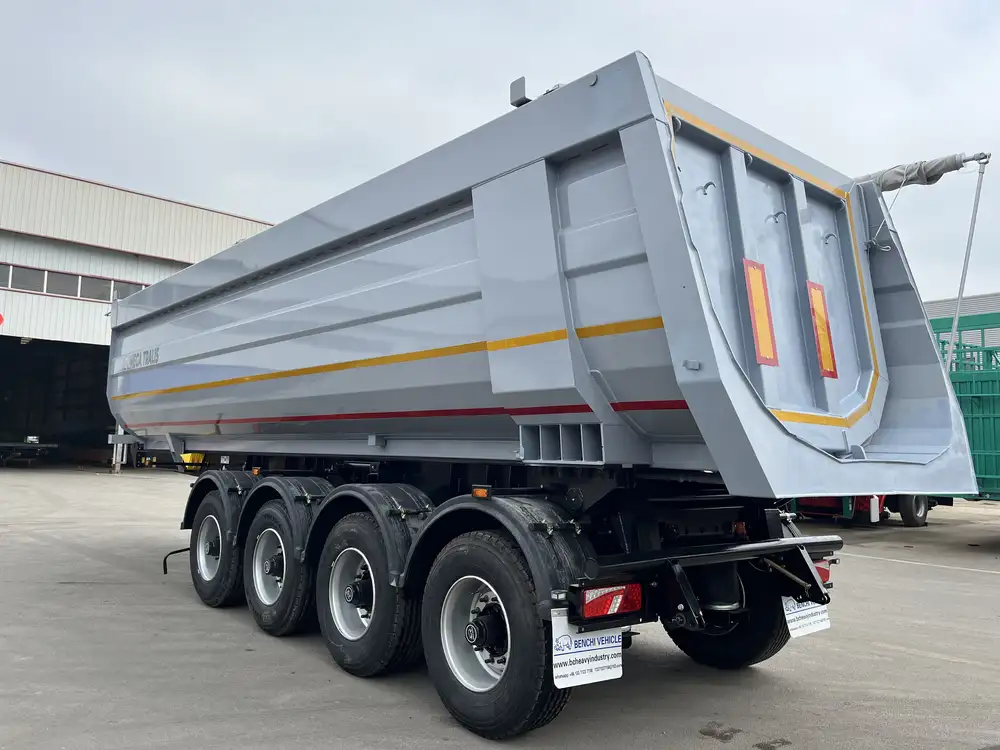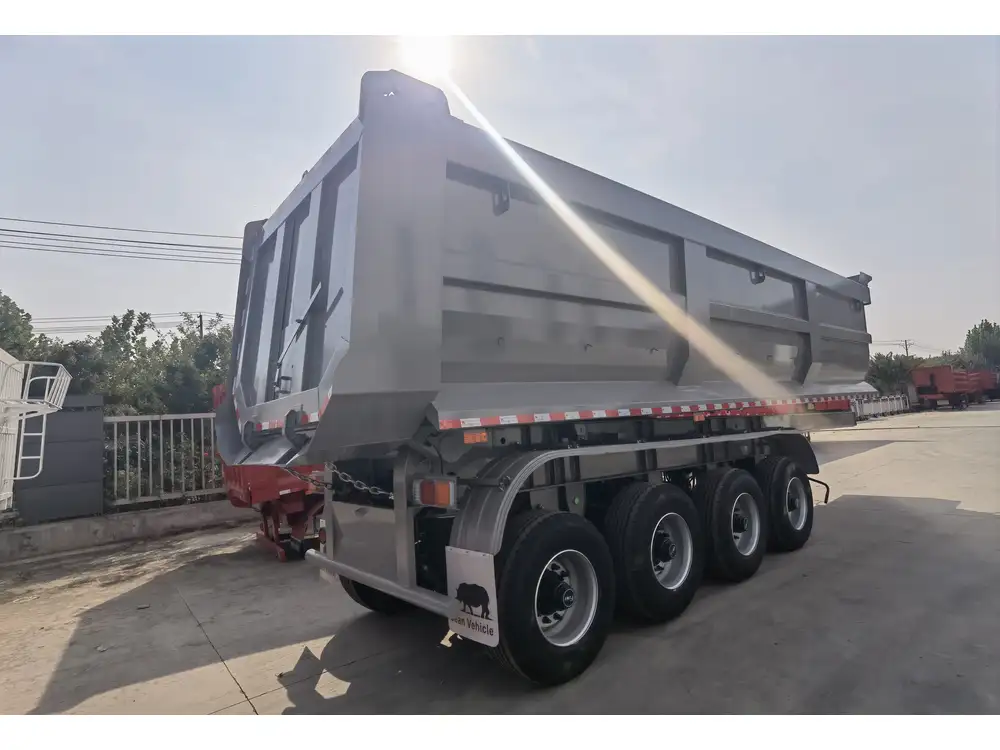When dealing with the complexities of semi-trailer brakes, understanding the mechanisms involved is crucial. Whether you’re a seasoned truck driver, a fleet manager, or a dedicated manufacturer, knowing how to effectively release semi-trailer brakes can not only save time but also enhance safety on the road. In this guide, we will delve into the various aspects surrounding the release of semi-trailer brakes, providing you with in-depth insights and practical solutions.
Table of Contents
- Understanding Semi-Trailer Brake Systems
- Common Reasons Why Brakes May Not Release
- Step-by-Step Process to Release the Brakes
- Preventive Measures to Avoid Brake Issues
- Tips for Troubleshooting and Maintenance
- Conclusion
Understanding Semi-Trailer Brake Systems
Before we dive into the problem of releasing brakes, let’s clarify how semi-trailer brake systems function. Semi-trailers predominantly utilize air brake systems—complex assemblies of pneumatic components designed to generate the necessary force to stop or slow down the vehicle effectively.

Types of Brake Systems
- Anti-lock Braking System (ABS): This system prevents wheel lock during sudden stops, ensuring your trailer maintains traction.
- Spring Brake System: This system uses spring force to apply the brakes when the air pressure drops, making it vital for safety in case of air supply loss.
Key Components
| Component | Function |
|---|---|
| Air Compressor | Generates compressed air for the braking system. |
| Brake Valves | Regulate air pressure to the brake chambers. |
| Brake Chambers | Convert compressed air energy into mechanical movement. |
| Slack Adjusters | Automatically adjust brake shoes to compensate for wear. |
Common Reasons Why Brakes May Not Release
Understanding why your semi-trailer brakes might be stuck is key to resolving the issue. Here are some prevalent culprits:
- Insufficient Air Pressure: Air systems rely on a robust supply of compressed air. If levels are below standard, the brakes may not release.
- Faulty Brake Valves: This can impede the flow of air, preventing the brakes from disengaging when pressure is applied.
- Corroded or Damaged Lines: Inspection of your airlines for leaks or damage is essential—corrosion can severely affect performance.
- Spring Brake Activation: If the spring brake mechanism has been activated due to pressure loss, it may need manual intervention to release.
- Obstructed Mechanisms: Physical obstructions, such as debris or ice, may hinder the proper functioning of the brake system.

Symptoms of Brake Issues
- Brakes engaging abruptly.
- Difficulty in releasing the brakes after a halt.
- Unusual noises during operation.
Step-by-Step Process to Release the Brakes
Now, let’s explore a systematic approach to releasing semi-trailer brakes, ensuring clarity and effectiveness at every step.
1. Conduct a Preliminary Inspection
Begin by visually inspecting the air lines, brake chamber, and connections:
- Look for leaks: Inspect for any signs of air loss, including puddles under the trailer.
- Check connections: Ensure all fittings are secure and intact.

2. Verify Air Pressure Levels
Utilize the onboard air gauge:
- Normal Range: Ensure the pressure is between 90-120 psi.
- Add Air as Needed: If insufficient, utilize the air compressor to restore levels.
3. Engage the Tractor’s Air Supply
If your semi-trailer is hitched, ensure that the tractor’s air supply is activated:
- Check the trailer control valve: Ensure it is in the “release” position.
- Dump air: In some systems, releasing the pressure can help disengage the brakes.
4. Manual Release Mechanism
If air pressure is adequate but the brakes still don’t release:
- Identify the spring brake lever: Located near the rear wheel.
- Pull the release knob: Counter-intuitively, sometimes a manual override can be the key.

5. Inspect the Brake System
If issues persist, manual inspection of the brake components can provide clarity:
- Examine Brake Chambers: Ensure they are functioning smoothly and not stuck.
- Check Slack Adjusters: Look for any signs indicating excessive wear or malfunction.
6. Test the Brakes
Once the above steps are completed, do a test:
- Engage the brakes gently: To ensure they respond correctly.
- Drive a short distance: Test engagement at low speeds to confirm correction.
Preventive Measures to Avoid Brake Issues
Keeping your semi-trailer brakes in optimal condition is paramount. Implement the following preventive strategies:
- Routine Inspections: Schedule regular brake inspections and maintenance during fleet check-ups.
- Air System Maintenance: Keep connectors and airlines clean and free of obstructions.
- Brake Adjustment: Regularly check and adjust slack adjusters to avoid excessive wear on brake shoes.
- Weather Considerations: Be prepared for rain or frost, which can significantly affect brake performance.
| Maintenance Activity | Frequency |
|---|---|
| Visual Inspection | Weekly |
| Air System Check | Monthly |
| Full Brake Inspection | Quarterly |
| Component Testing | Bi-annually |

Tips for Troubleshooting and Maintenance
Even with preventive care, issues can arise. Here are some troubleshooting tips to keep in mind:
- Use the Right Tools: Always have the necessary tools on hand to perform maintenance, including gauges, wrenches, and lubricants.
- Document Maintenance: Keep a detailed log of all maintenance work, adjustments, and inspections.
- Training and Education: Ensure drivers are trained in recognizing early signs of brake issues.
- Invest in Quality Parts: High-quality components can prevent problems related to premature wear and failure.
Common Troubleshooting Questions
What should I do if my truck gets stuck?
- If stuck, employ a rolling motion by slightly engaging the clutch while gently accelerating to see if momentum helps disengage.
How can I tell if my air compressor is working efficiently?
- Listen for unusual noises and check the pressure gauge regularly. If the pressure is not building up, servicing may be required.
Conclusion
Navigating the complexities of semi-trailer brake systems requires diligence and understanding. By following the outlined procedures and maintaining rigorous preventive measures, you can ensure safer operations and greater reliability on the road.
With careful attention, the process of releasing semi-trailer brakes becomes seamless, allowing for smooth transitions from stopping to moving again. Should complications arise, having a comprehensive knowledge and approach empowers operators and managers alike to tackle issues efficiently.
Ultimately, fostering a culture of proactive maintenance will pave the way toward safer and more efficient transport operations.



